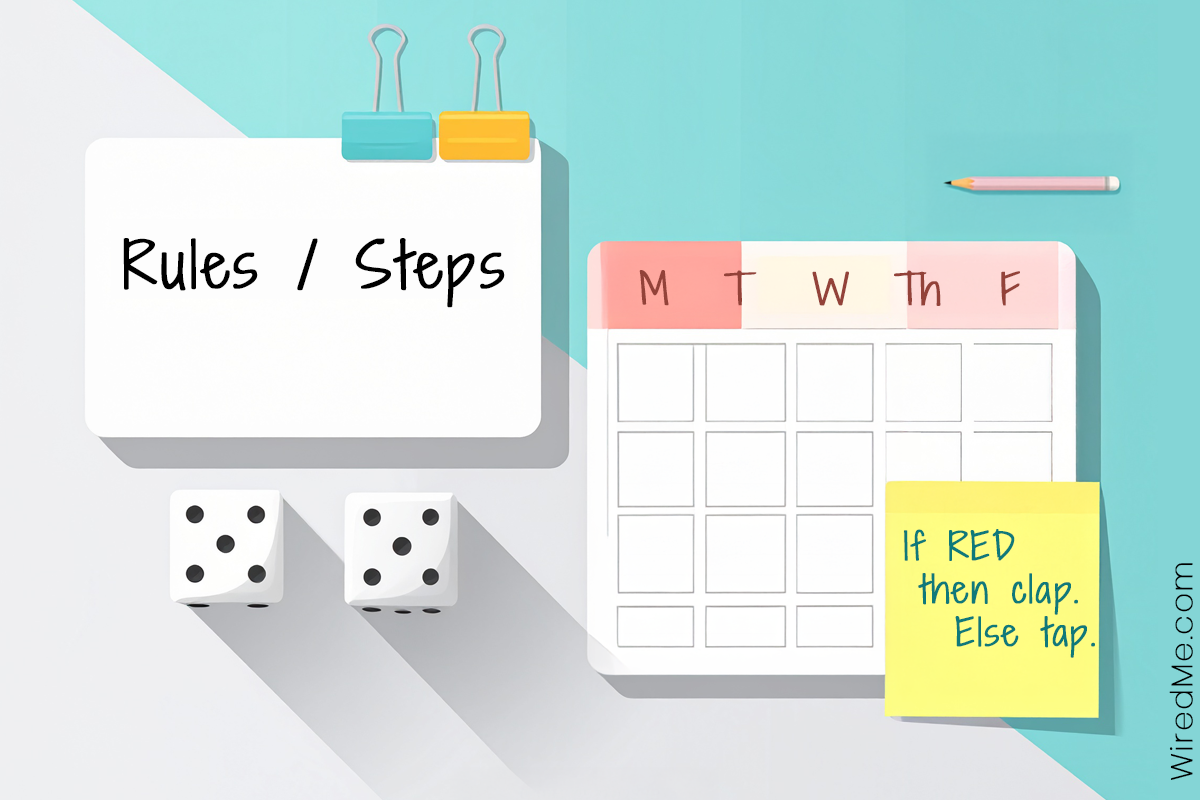You can teach coding at home without screens or a tech background. Parents want simple routines that fit real life. This plan gives you one clear rhythm, quick table games, and short talk prompts that build habits. Because sessions stay short, kids stay focused. You guide the practice with plain language, and over time your child begins to explain the steps and the rules back to you. That is the moment you will know this approach works.
What Is Teach Coding at Home
Teach coding at home means using short, hands on activities to build core skills that developers use every day. Kids learn sequencing, conditionals, loops, and debugging with cards, dice, paper, and movement. There is no app to set up and no long prep to do. You set a simple rule, run a tiny game, and stop while it still feels fun. The goal is to make thinking steps visible so your child can talk about them.
Why This Matters for Real Developers
Developers plan clear steps before they write code. They use rules like if this then that. They repeat actions with a stop rule. They test a small change when something breaks. These same ideas show up in your kitchen and at your table. When you teach coding at home, you help your child see patterns, talk through choices, and fix one thing at a time. That is real problem solving and it transfers to math, writing, and science.
The 10 Minute Routine
Here is the flow to use every day.
- Say the idea in one line. For example, “A loop repeats steps.”
- Play a quick game at the table or on the floor.
- Talk for 30 seconds about what you noticed.
- High five and stop while energy is still high.
Weekly rhythm
- Monday: Sequencing. Put steps in order for a task.
- Tuesday: Conditionals. If this happens, then do that.
- Wednesday: Loops. Repeat steps until a stop rule.
- Thursday: Debugging. Find one mistake and fix it.
- Friday: Share. Your child teaches a mini challenge to you.
This routine keeps your effort low and your results steady. Repetition builds confidence. Variety keeps interest up.
A Week in Real Life
Monday. Place four cards for making lunch. Wash hands, get bread, add filling, eat. Ask, “Which comes first. Which comes last.” Mix two steps on purpose. Ask, “What is wrong. How do we fix it.”
Tuesday. Flip a card from a deck. If red, clap. Else, tap. After one minute ask, “What is the rule. Where do we stop.”
Wednesday. Do a clap then tap pattern ten times. Count out loud. Stop at ten. Ask, “How did we know to stop.”
Thursday. Run any game from earlier but hide one card. Pause when the bug appears. Ask, “What changed. What stayed the same.”
Friday. Your child teaches you the loop game. You follow their steps exactly, even if they miss something. Let them notice and correct it.
Simple Activity You Can Start Today
The Card Clap Game
- Goal: Practice conditionals and loops in one game.
- Setup: One deck of cards and open space.
- Rules: If the card is red, clap. Else, tap. Repeat ten times. Stop at ten.
- Make it harder: If the card is a red even number, stomp. Else, clap. Ask your child to say the rule and the stop point before you start.
- Leveling: Use picture cards for K to 2. Add a timer and a written rule card for grades 3 to 5.
Parent Prompts That Unlock Thinking
Short questions help kids name what they just did.
- What is the rule?
- Where do we stop?
- What changed. What stayed the same?
- Can you say the steps back to me?
- How would you teach this to a friend?
These prompts are small on purpose. They keep the talk brief and focused. They also make your child the expert, which boosts motivation.
Common Bumps and Easy Fixes
Rushing. Add a visible stop rule such as ten counters or a one minute timer.
Stuck. Shrink the task to two steps. Run it once. Then add one more step.
Low energy. Switch to a movement version for one round.
Too easy. Add a second rule or ask for a written algorithm on an index card.
Losing track. Put the rule card on the table so everyone can see it.
Materials and Setup
Keep it simple. Index cards, sticky notes, a pencil, tape, one die, and a deck of cards. Store everything in a small bin so you can start fast. Write four blank “step” cards and four blank “rule” cards once. Reuse them all week.
How to Assess Without Tests
Look for four actions.
Explain. Your child restates the rule in one line.
Do. Your child runs the steps alone.
Fix. Your child spots and fixes one bug.
Teach. Friday teach back shows mastery.
Use a tiny tracker with boxes for M T W T F. Check the box each day. Add a smiley for a clear rule and a star for a fixed bug. This visual shows progress and invites a short celebration.
Build a Path to Real Code
When you teach coding at home with this routine, you build a bridge to block code and text code. Keep the same prompts when you move to a coding app later. Ask for the rule, the stop point, and the bug fix. Your child will recognize the pattern from your table games and feel ready to try.
What to Read Next
Use these quick routines to teach coding at home in minutes, then build toward real code once your child can explain the rule and the stop point. Strengthen each concept with a short guide and a quick activity.

Freebies and printable trackers
FAQ
How young can we start?
Kindergarten works well. Use pictures and movement. Keep it playful and short.
Do we need screens?
No. Cards, dice, paper, and a little space are enough for core ideas.
How long should we practice?
Ten minutes a day is ideal. Consistency beats long lessons.
What if my child wants more?
End at ten minutes. Offer a bonus round later. Ending early keeps interest high.
Will this help with real code later?
Yes. Sequencing, conditionals, loops, and debugging map directly to programming.

Start today
Run the Card Clap Game for ten minutes and ask your child to explain the rule and the stop point. Then read Sequencing for Kids and set up tomorrow’s session. Want printable rule cards and a one page tracker. Grab them on the Freebies page.
Curious how this maps to real standards? See the CSTA K–12 Computer Science Standards for the practices behind sequencing, conditionals, loops, and debugging.


Leave a Reply